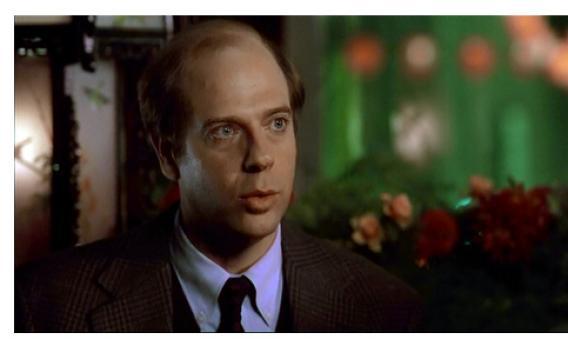I remember the day my agent called and told me he was sending me a new script. I had just landed several movies in a row, and agents believe in one thing more than luck—momentum. He wanted to keep it rolling.
The messenger arrived with a big envelope. I opened it. It said Sneakers. My heart sank. It sounded like a bad teen comedy about a hapless junior-high basketball team that is saved when they recruit a girl point guard who’s a great shot.
It is one of the few times I called my agent before I read something. I said, “You’re kidding? Sneakers? I was just in good movies like Mississippi Burning and Thelma & Louise. Now this? Come on!” My agent was sympathetic and said, “Just see if you like it.”
I read the script on my porch and called my agent back. “Forget everything I said. Wow. Now I know what a hundred million dollars at the box office reads like.” (Figure not adjusted for inflation.)
The script, written by Phil Alden Robinson, Larry Lasker, and Walter Parkes, is a wonder of the modern screenwriting world. It survives by wit and not tricks. It’s a caper movie that transcends the genre. It’s a technology movie that still isn’t outdated even though it was released 20 years ago and features cradle modems.
The first day on the job we had a table read. What a table. Robert Redford and Sir Ben Kingsley were at one end of the room. Sidney Poitier was sitting next to me. River Phoenix was across the table. Then throw in James Earl Jones, Mary McDonnell, Dan Aykroyd, David Strathairn, Tim Busfield, George Hearn. I don’t want to leave anyone out. It was one of the most spectacular casts I’ve ever been lucky enough to be a part of. I didn’t make my entrance until around Page 78. The cast must have thought I was there to take coffee orders at the break. I sat listening, but my predominant thought was “Damn, Sidney Poitier is a handsome man.”
We shot the first Werner Brandes scene at a Chinese restaurant. I am on a date with Mary McDonnell’s character, Liz, who is secretly recording me, trying to get me to say several key words that will enable her team to disarm a voice-activated security system and break into my laboratory. Phil’s first piece of direction to me was “Stephen, feel free to do anything you want to make Mary laugh.” Dangerous words. It set the tone for the rest of the shoot. I played with my food. I made up lines (including one about pounding chicken breasts in the kitchen during our second date). I can’t remember having so much fun on a movie.
In the makeup trailer I got to listen to Ben Kingsley tell theater stories. For the record, Ben is the greatest storyteller alive. Hilarious and insightful. One of the advantages of being me on a movie set is that I never need makeup. It doesn’t help. Ben, however, had to wear a wig. That translated into hours in makeup and hair. The makeup trailer became his stage. Even when no one needed powdering we gathered for Ben to thrill us with more tales of his early days as an actor and his various onstage disasters working in regional theaters in England.
During part of the big action finale, Robert Redford is chased through a secret lab by all of us bad guys. Phil was choreographing the chase and trying to put us in some kind of order of how fast we were running. He said, “Let’s do it this way. Ben, you’re the Academy Award winner, we’ll start with you. Then, Tim, the Emmy winner, you’ll be next. Do we have a Tony winner? Anyway, Stephen, you’ll be last.”
Here is a Hollywood Zen story. We shot on location around Los Angeles and at Universal. The studio has a going concern of little buses that regularly drive through the back lot area with tourists from all over the world wielding disposable cameras. The tour guide has a set patter, “On your right is the shark from Jaws. On your left is Columbo’s automobile.” While one of the buses was nearing our stage, we were called to the set. The tour bus had to stop while Robert Redford and James Earl Jones crossed in front of it. No one noticed. The guide just kept up with, “On our right is the bicycle from E.T.” People were snapping away at the bicycle and were completely oblivious that two of the most famous actors in the world were a few feet away from them.
At the end of the shoot, Phil said the only thing that could make the whole experience of working on Sneakers better was if the lab lost the film. Then we would be able to do it all over again.
Years later I ran into Phil at the symphony. I asked him I how he was able to come up with such a great script. He blushed and said he had worked on it for nine years. I know spending a long time writing something doesn’t guarantee success. But not giving up on a good idea almost always does.
Also in Slate’s celebration of the 20th anniversary of the movie Sneakers: John Swansburg and Julia Turner discuss the film’s enduring appeal; and Lowen Liu investigates how the movie’s “Setec Astronomy” ended up on a black-ops uniform patch and also attempts to re-create one of the most memorable scenes.
